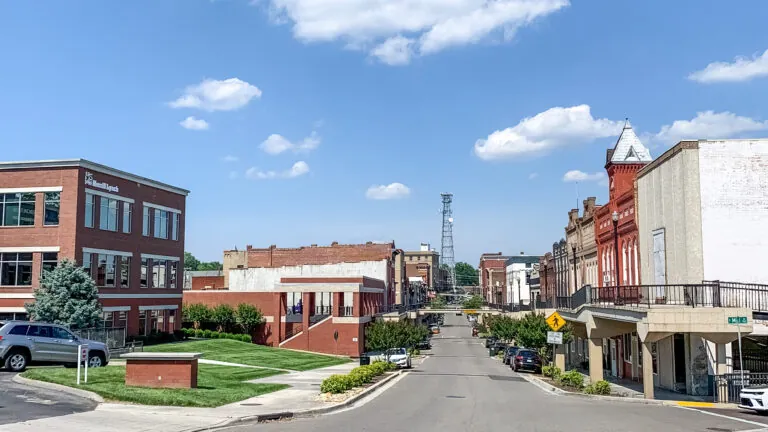This New York City Takes the Lead in Highest Cancer Rates in the State
According to the New York State Cancer Registry, the Bronx has the highest cancer rates in New York State. In 2016-2020, the average annual cancer incidence rate in the Bronx was 469.5 per 100,000 people, compared to 431.7 per 100,000 people statewide.
Factors Contributing to High Cancer Rates
1. Socioeconomic Factors
The Bronx faces significant socioeconomic challenges, with a poverty rate of 22.3%, exceeding the national average. This economic disparity contributes to higher cancer rates due to:
a. Limited Access to Healthy Foods
Residents in poverty-stricken areas often find themselves in food deserts, lacking access to affordable, nutritious options. This limitation contributes to an unhealthy diet, a significant risk factor for cancer.
b. Increased Exposure to Environmental Toxins
Poverty-stricken neighborhoods tend to have higher levels of environmental toxins like air pollution and industrial waste, elevating the risk of cancer development.
c. Stress
The burden of poverty is associated with heightened stress levels, further compounding the risk of developing cancer.
2. Environmental Factors
The Bronx contends with several environmental hazards that contribute to its elevated cancer rates:
a. Air Pollution
The borough has some of the highest levels of air pollution in New York City, a known carcinogen linked to lung cancer, bladder cancer, and other types of cancer.
b. Industrial Waste
Numerous industrial sites in the Bronx produce hazardous waste, increasing the risk of cancer development.
c. Diesel Exhaust
As a major transportation hub, the Bronx faces increased exposure to diesel exhaust, a known carcinogen associated with lung cancer and other malignancies.
3. Access to Healthcare
The Bronx grapples with a shortage of healthcare providers, making it challenging for residents to receive timely preventive care and cancer screenings. Lower screening rates lead to later cancer diagnoses, reducing treatment efficacy.
4. Other Factors
Additional contributors to high cancer rates in the Bronx include:
a. Obesity
The borough experiences a high obesity rate, a significant risk factor for various cancers, including breast, colon, and endometrial cancers.
b. Smoking
With a higher smoking rate compared to the rest of New York City, the Bronx faces an increased risk of lung and other smoking-related cancers.
c. Age
The Bronx’s relatively young population contributes to higher overall cancer rates, as cancer incidence tends to rise with age.
Addressing the Issue
The New York City Department of Health is actively addressing the high cancer rates in the Bronx through targeted programs and initiatives:
1. Increasing Access to Cancer Screening
Efforts are underway to enhance access to cancer screening services, such as mammograms and colonoscopies. Free or low-cost screenings are being provided to eligible residents to ensure early detection and intervention.
2. Promoting Healthy Lifestyles
The department is committed to promoting healthier lifestyles in the Bronx, encouraging smoking cessation and advocating for a balanced diet. Educational programs and resources are available to empower residents to make healthier choices.
3. Addressing Environmental Hazards
Collaborating with other city agencies, the department is actively working to mitigate environmental hazards in the Bronx. Initiatives include reducing air pollution and cleaning up contaminated sites to create a healthier living environment.
4. Community Partnerships
The department recognizes the social determinants of health and is building partnerships with community organizations and healthcare providers. These collaborations aim to improve access to affordable housing, education, and employment opportunities, addressing the root causes of the high cancer rates in the Bronx.
In Conclusion
The complex interplay of socioeconomic, environmental, and lifestyle factors contributes to the Bronx’s high cancer rates. However, concerted efforts by the New York City Department of Health offer hope for a healthier future, emphasizing prevention, early detection, and community collaboration.
FAQ’s
Q: Why are the cancer rates in the Bronx higher than the cancer rates in other parts of New York State?
A: There are a number of factors that may contribute to the high cancer rates in the Bronx, including socioeconomic factors, environmental factors, and access to healthcare. Socioeconomic factors such as poverty and lack of access to healthy foods can make it difficult for people to live healthy lifestyles and reduce their risk of developing cancer. Environmental factors such as air pollution and industrial waste can also increase the risk of developing cancer. Additionally, the Bronx has a shortage of doctors and other healthcare providers, which can make it difficult for people to get the preventive care they need to detect cancer early.
Q: What are the most common types of cancer in the Bronx?
A: The most common types of cancer in the Bronx are lung cancer, breast cancer, prostate cancer, and colon cancer. These types of cancer are also the most common types of cancer in the United States as a whole.
Q: What can people in the Bronx do to reduce their risk of developing cancer?
A: There are a number of things that people in the Bronx can do to reduce their risk of developing cancer, including:
- Quitting smoking: Smoking is the leading cause of preventable death in the United States, and it is a major risk factor for lung cancer and other types of cancer.
- Eating a healthy diet: Eating a healthy diet can help to reduce the risk of developing a number of types of cancer, including breast cancer, colon cancer, and endometrial cancer. A healthy diet includes plenty of fruits, vegetables, and whole grains. It is also important to limit processed foods, red meat, and sugary drinks.
- Exercising regularly: Exercise can help to reduce the risk of developing a number of types of cancer, including colon cancer, breast cancer, and endometrial cancer. Aim for at least 30 minutes of moderate-intensity exercise most days of the week.
- Getting regular cancer screenings: Cancer screenings can help to detect cancer early, when it is most treatable. Talk to your doctor about which cancer screenings are right for you.
Q: What is the New York City Department of Health doing to address the high cancer rates in the Bronx?
A: The New York City Department of Health is working to address the high cancer rates in the Bronx through a number of programs and initiatives, including:
- Increasing access to cancer screening: The department is working to increase access to cancer screening services, such as mammograms and colonoscopies, for people in the Bronx. This includes providing free or low-cost screenings to eligible residents.
- Promoting healthy lifestyles: The department is also working to promote healthy lifestyles, such as quitting smoking and eating a healthy diet, which can help to reduce the risk of developing cancer. This includes providing educational programs and resources to help people make healthy choices.
- Addressing environmental hazards: The department is also working to address environmental hazards in the Bronx, such as air pollution and industrial waste. This includes working with other city agencies to reduce air pollution and to clean up contaminated sites.
The department is also working to build partnerships with community organizations and healthcare providers to address the social determinants of health that contribute to the high cancer rates in the Bronx. This includes working to improve access to affordable housing, education, and employment opportunities.







